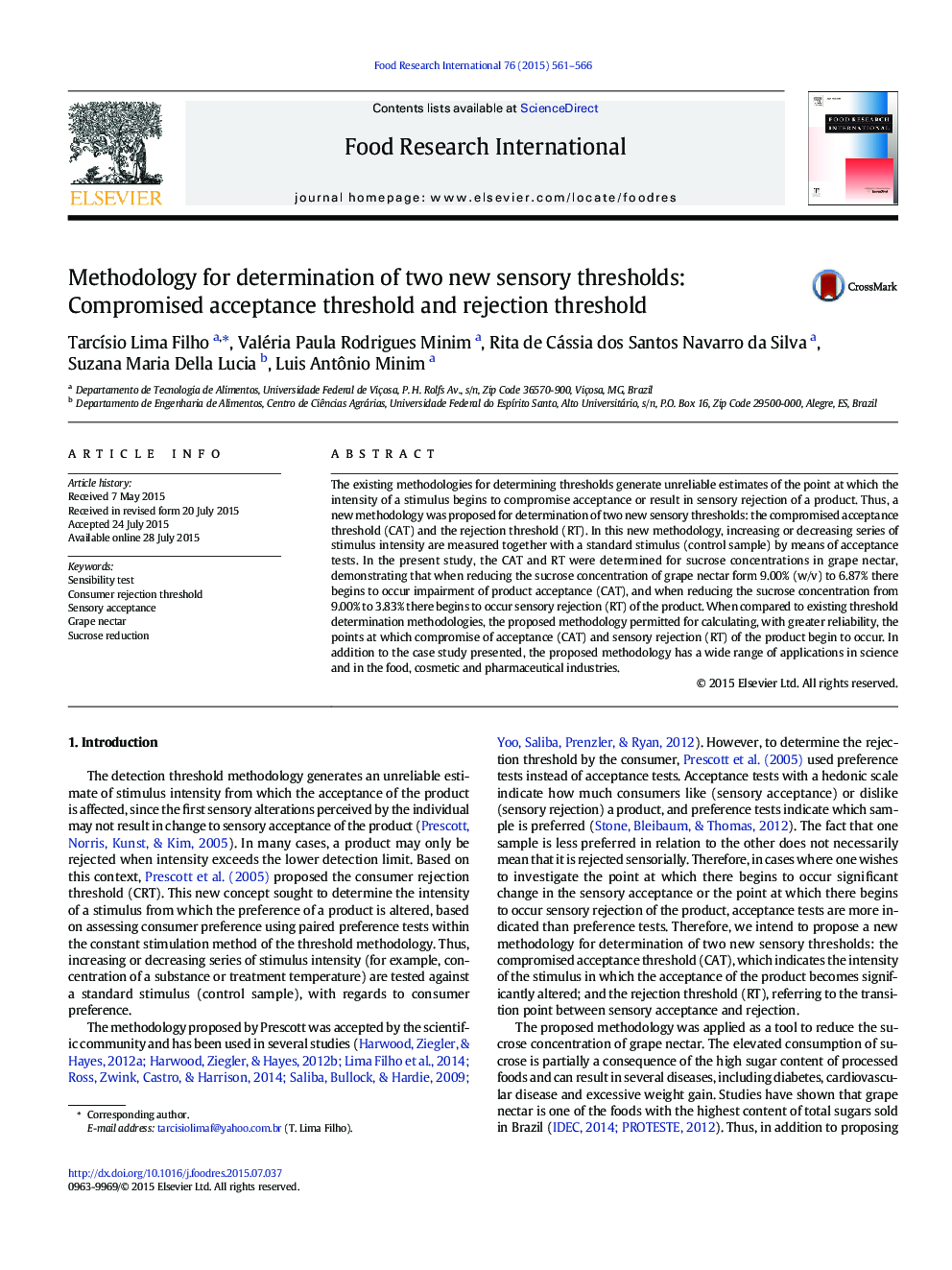| Article ID | Journal | Published Year | Pages | File Type |
|---|---|---|---|---|
| 6395181 | Food Research International | 2015 | 6 Pages |
Abstract
The existing methodologies for determining thresholds generate unreliable estimates of the point at which the intensity of a stimulus begins to compromise acceptance or result in sensory rejection of a product. Thus, a new methodology was proposed for determination of two new sensory thresholds: the compromised acceptance threshold (CAT) and the rejection threshold (RT). In this new methodology, increasing or decreasing series of stimulus intensity are measured together with a standard stimulus (control sample) by means of acceptance tests. In the present study, the CAT and RT were determined for sucrose concentrations in grape nectar, demonstrating that when reducing the sucrose concentration of grape nectar form 9.00% (w/v) to 6.87% there begins to occur impairment of product acceptance (CAT), and when reducing the sucrose concentration from 9.00% to 3.83% there begins to occur sensory rejection (RT) of the product. When compared to existing threshold determination methodologies, the proposed methodology permitted for calculating, with greater reliability, the points at which compromise of acceptance (CAT) and sensory rejection (RT) of the product begin to occur. In addition to the case study presented, the proposed methodology has a wide range of applications in science and in the food, cosmetic and pharmaceutical industries.
Keywords
Related Topics
Life Sciences
Agricultural and Biological Sciences
Food Science
Authors
TarcÃsio Lima Filho, Valéria Paula Rodrigues Minim, Rita de Cássia dos Santos Navarro da Silva, Suzana Maria Della Lucia, Luis Antônio Minim,
